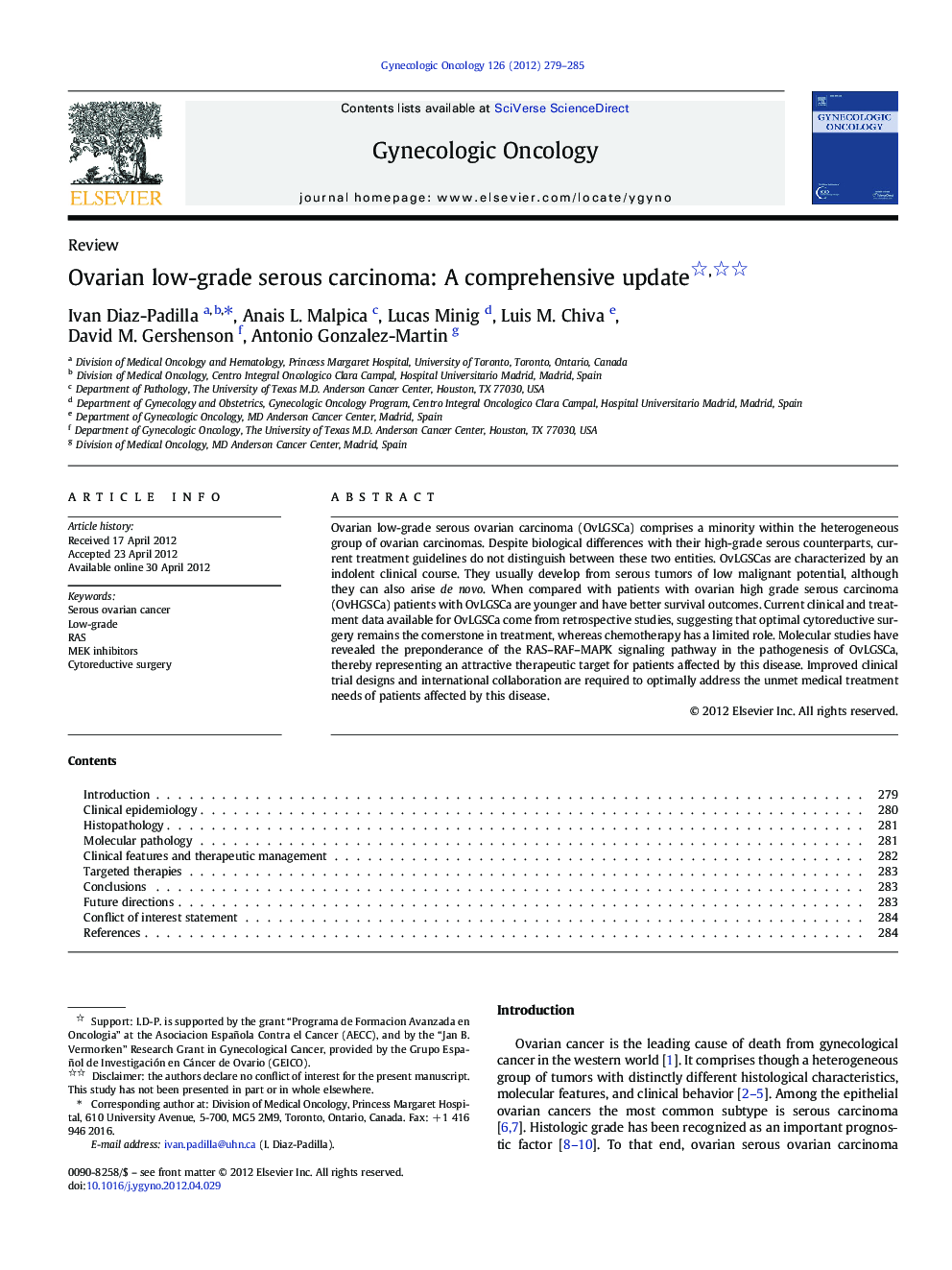| Article ID | Journal | Published Year | Pages | File Type |
|---|---|---|---|---|
| 3947010 | Gynecologic Oncology | 2012 | 7 Pages |
Ovarian low-grade serous ovarian carcinoma (OvLGSCa) comprises a minority within the heterogeneous group of ovarian carcinomas. Despite biological differences with their high-grade serous counterparts, current treatment guidelines do not distinguish between these two entities. OvLGSCas are characterized by an indolent clinical course. They usually develop from serous tumors of low malignant potential, although they can also arise de novo. When compared with patients with ovarian high grade serous carcinoma (OvHGSCa) patients with OvLGSCa are younger and have better survival outcomes. Current clinical and treatment data available for OvLGSCa come from retrospective studies, suggesting that optimal cytoreductive surgery remains the cornerstone in treatment, whereas chemotherapy has a limited role. Molecular studies have revealed the preponderance of the RAS–RAF–MAPK signaling pathway in the pathogenesis of OvLGSCa, thereby representing an attractive therapeutic target for patients affected by this disease. Improved clinical trial designs and international collaboration are required to optimally address the unmet medical treatment needs of patients affected by this disease.
► OvLGSCa represents a distinctive clinical and molecular entity. ► Optimal cytoreduction is the most important prognostic factor in advanced disease. ► Targeting the RAS–RAF–MEK pathway appears as a promising therapeutic strategy.
